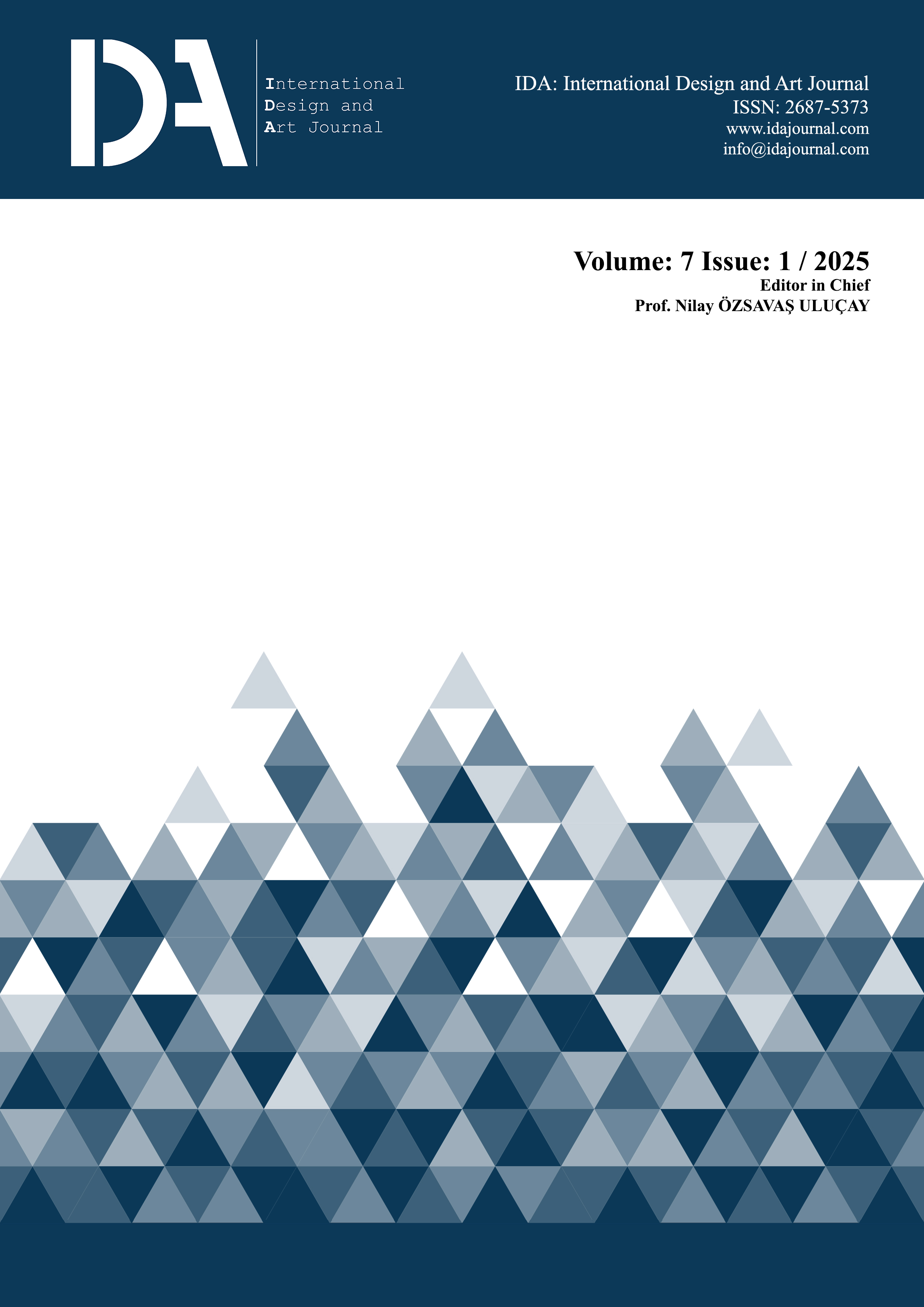Reflection of 20th-century techno-utopias to the present day: Capsule hotels
Keywords:
Capsule hotel, Micro-dwelling, Techno-utopia, Metabolism movement, ArchigramAbstract
Several factors, such as population growth, increasing land prices, and challenging economic conditions, have led to a change in hotel design. In response to these challenges, capsule hotels have emerged as a potential solution. These hotels are designed to be compact, cost-effective, and conveniently located near airports or train stations. Inspired by the 20th-century techno-utopias and first emerging in Japan during the 1970s, these capsule hotels have spread to many countries in the 21st-century. The aim of this study is to identify the common and distinctive features of capsule hotels in different countries. Three capsule hotel examples were selected, namely the Nine Hours Capsule Hotel in Osaka, the KINN Capsule Hotel in Singapore, and the Capsule Hotel-Sydney in Sydney. The study used a mixed qualitative research method, including conceptual analysis and case study, and the selected hotel examples were analyzed using the homogeneous sampling technique. The design of these hotels, characterized by economic efficiency and limited facilities, shows variations across different countries in terms of capsule dimensions, color schemes, materials, and furnishings. The findings reveal discrepancies in location, color schemes, material choices, and amenities; however, the size, configuration, and access orientations of the capsules remain consistent with the established capsule hotel concept as defined in the literature.
References
Altun, D. (2022). Kısa dönem konaklama üniteleri: Uyku kabinlerinin kullanıcı ile olan ilişkisi [Yüksek Lisans Tezi, Başkent Üniversitesi]. YÖK Ulusal Tez Merkezi.
Arslan, M. E. (2006). 20. yüzyıl teknolojik ütopyalarının, hareketlilik, esneklik/uyabilirlik ve teknoloji kavramları bağlamında çağdaş konut tasarımına etkisi [Yüksek Lisans Tezi, İstanbul Teknik Üniversitesi]. YÖK Ulusal Tez Merkezi.
Bagio, A. C. & Budidharmanto, L. P. (2023). Guest pro-environmental behavior towards the implementation of energy efficiency through smart key technology in capsule hotel. Indonesian Journal of Social and Environmental Issues, 4(2), 184-191. https://doi.org/10.47540/ijsei.v4i2.1009
Barışık, G. O. & Özen, E. S. (2020). Dar mekanlarda esnek ve fonksiyonel mutfak tasarımları. Sanat ve Tasarım Dergisi, (26), 537-561.
Baydaroğlu, M. (2022). Tracing traditional elements of Japanese architecture through contemporary micro houses in Japan [Yüksek Lisans Tezi, Yeditepe Üniversitesi]. YÖK Ulusal Tez Merkezi
Belentepe, A. & Kariptaş, F. S. (2019). Mikro konutların iç mekân tasarımının incelenmesi. Haliç Üniversitesi Fen Bilimleri Dergisi, 2(2), 179-195. https://doi.org/10.46373/hafebid.603795
Bilquish, I. & Susanto, D. (2018, Ağustos 12-14). Reveal the type of micro-units as a living place in Jakarta apartments. 2nd International Conference on Smart Grid and Smart Cities (ICSGSC 2018) İçinde (ss. 10-15), Kuala Lumpur, Malaysia. IEEE. https://doi.org/10.1109/ICSGSC.2018.8541299
Boonbanjerdsri, K. (2012). Capsule homes: Creating space within space [Doktora Tezi, Massachusetts Institute of Technology]. MIT Libraries.
Chen, H. J., Wong, S. W., Bilgihan, A., & Okumus, F. (2020). Capsule hotels: Offering experiential value or perceived as risky by tourists? An optimum stimulation level model. International Journal of Hospitality Management, 86(102434), 1-10. https://doi.org/10.1016/j.ijhm.2019.102434
Cook, P. (Ed.). (1999). Archigram. Princeton Architectural Press.
Çalhan, H. (2023). Turizmde inovatif bir ürün olarak kapsül otellerin incelenmesi. Journal of Gastronomy, Hospitality and Travel, 6(1), 112-130. https://doi.org/10.33083/joghat.2023.252
Davey, L. (1991). The application of case study evaluations. Practical Assessment, Research & Evaluation, 2(9), 1-2. https://doi.org/10.7275/02g8-bb93
Dornob. (2022, 23 Haziran). Minimalist 9 Hours Capsule Hotel. Dornob. https://dornob.com/9-hours-small-boutique-pod-hotel-features-minimalist-luxury/ (19.11.2024).
Duran, Ö. (2011). Mimarlık ve bilim kurgu edebiyatı bağlamında Archigram’dan ve Reeve’den öğrendiklerimiz [Yüksek Lisans Tezi, Gazi Üniversitesi]. YÖK Ulusal Tez Merkezi.
Fragkou, D. & Stevenson, E. V. (2012). Study of beehive and its potential “biomimicry” application on capsule hotels in Tokyo, Japan. Proceedings of the 2nd Conference of People and Buildings, London Metropolitan University.
Globalization & World Cities. (2025). The world according to GaWC. https://gawc.lboro.ac.uk/gawc-worlds/the-world-according-to-gawc/ (12.03.2025).
Gunawan, Y., Gaol, F. L., & Matsuo, T. (2024). Unveiling risks through machine learning: analyzing Indonesian user feedback dataset of capsule hotel experiences. Kesatria: Jurnal Penerapan Sistem Informasi (Komputer dan Manajemen), 5(2), 395-404.
Haack, L. & Höpfner, J. (2010). Microarchitecture-experiments in space optimisation. C. Schittich (Ed.), Detail small structures: compact dwelling, temporary structures, room modules İçinde (s. 11-23). Birkhauser.
Hjgher Studio. (2024). KINN Hotel. Hjgher Studio. https://hjgher.com/projects/kinn/ (19.11.2024).
Hunn, P. (2017, 9 Haziran). 2001: A Space Odyssey meets The Great Gatsby: Australia’s first capsule hotel opens in Sydney. Architecture, Au. https://architectureau.com/articles/2001-a-space-odyssey-meets-the-great-gatsby-australias-first-capsule-hotel-opens-in-sydney/ (19.11.2024).
Iglesias, T. (2014). The promises and pitfalls of micro‐housing. Zoning and Planning Law Report, 37(10), 1-12.
İslamoğlu, H. & Alnıaçık, Ü. (2019). Sosyal bilimlerde araştırma yöntemleri. Beta Yayınevi.
Jablonska, J., Tarczewski, R., & Trocka-Leszczynska, E. (2018). Ergonomic solutions in capsule hotels? J. Charytonowicz, C. Falcão (Ed.), Advances in human factors, sustainable urban planning and infrastructure İçinde (ss. 239-248). Springer International Publishing. https://doi.org/10.1007/978-3-319-60450-3_23
Kurnalı, M. (2022). Mikro mekanlarda iç mekan ergonomisi. International Journal of Engineering Research and Development, 14(3), 20-31. https://doi.org/10.29137/umagd.1197616
Kurokawa, K. (1977). Metabolism in architecture. Studio Vista.
Lee, T. Y. (2013). Top 10 trends of the next generation of travel: The millennials. HVS Global Hospitality Services.
Lee, W. S., Lee, J. K., & Moon, J. (2018). Study on the preference for capsule hotel attributes using a choice experiment. Tourism Economics, 24(4), 492-499. https://doi.org/10.1177/1354816618765345
Lemy, D. M. & Heidi, E. (2019). The potential of capsule hotel service in Semarang. E-Journal of Tourism, 6, 196-209. https://doi.org/10.24922/eot.v6i2.49944
Lin, Z. (2011). Nakagin Capsule Tower and the Metabolist Movement revisited. Journal of Architectural Education, 65, 13-32. https://doi.org/10.1111/j.1531-314X.2011.01158.x
Mallgrave, H. F. (2005). Modern architectural theory: A historical survey, 1673-1968. Cambridge University Press. https://doi.org/10.1017/CBO9780511497728
Michael, G., Yaacob, N. M., & Ali, Z. M. (2018). The capsule living unit reconsidered a utopia transformed reality. Pertanika Journal of Social Sciences & Humanities, 26(3), 1405-1417.
Nine Hours. (t.y.a). 9h nine hours Namba Station. Nine Hours. https://ninehours.co.jp/en/namba-station (19.11.2024).
Nine Hours. (t.y.b). Our features. Nine Hours. https://ninehours.co.jp/en/stay-services (19.11.2024).
Olorunsola, V. O., Saydam, M. B., Lasisi, T. T., & Eluwole, K. K. (2023). Customer experience management in capsule hotels: A content analysis of guest online review. Journal of Hospitality and Tourism Insights, 6(5), 2462-2483. https://doi.org/10.1108/JHTI-03-2022-0113
Özturan, Ö. (2015). Teknolojik gelişmelerin iç mekân biçimlenişine etkisi. İç Mimarlık Dergisi, (5), 125-135.
Richmond, S. (2012). Micro-living: Learning to live large in small spaces [Yayımlanmamış Yüksek Lisans Tezi]. Victoria University of Wellington https://doi.org/10.26686/wgtn.17011805.v1
Rutes, W. A., Penner, R. H., & Adams, L. (2001). Hotel design, planning and development. Norton & Company.
Sekman, A. (2017). Kentsel formların ütopya ve distopya kavramları bağlamında irdelenmesi. Toplum ve Demokrasi Dergisi, 11(23), 103-120.
Šenk, P. (2013). The concept of capsule architecture as experiment; origins and manifestations with selected examples from Slovenia and Croatia. Prostor: znanstveni časopis za arhitekturu i urbanizam, 21(2), 351-361.
Šenk, P. (2018). Capsules: Typology of other architecture. Routledge. https://doi.org/10.4324/9781315272177
Soub, N. M. H. & Memikoğlu, İ. (2020). Exploring the preferences for micro-apartments. Online Journal of Art & Design, 8(2), 88-99.
Şekerci, C. & Taştan, Z. (2024). Mikro mekân kavramının örnekler üzerinden incelenmesi. E. Selçuk (Ed.), Mimarlık, planlama ve tasarım alanında uluslararası araştırmalar V İçinde (ss. 97-117). Eğitim Yayınevi.
Şensoy, G. (2016). Mimarlıkta eleştiri bağlamında ütopya önermeleri [Yüksek Lisans Tezi, Eskişehir Anadolu Üniversitesi]. YÖK Ulusal Tez Merkezi.
Tamari, T. (2014). Metabolism: Utopian urbanism and the Japanese modern architecture movement. Theory, Culture & Society, 31(7-8), 201-225. https://doi.org/10.1177/0263276414547777
The Capsule Hotel. (2017). Capsule. The Capsule Hotel. https://www.thecapsulehotel.com.au/rooms (19.11.2024).
Tüzünkan, D. (2017). The relationship between innovation and tourism: The case of smart tourism. International Journal of Applied Engineering Research, 12(23), 14861-14867.
Urban Land Institute. (2014). The macro view on micro units. Urban Land Institute.
Yu, H. & Akita, T. (2019). The effect of illuminance and correlated colour temperature on perceived comfort according to reading behaviour in a capsule hotel. Building and Environment, 148, 384-393. https://doi.org/10.1016/j.buildenv.2018.11.027
World Architecture. (2019, 18 Aralık). Naruse Inokuma Architects reinvents capsule hotel experience with more functionality in this hotel. World Architecture. https://worldarchitecture.org/article-links/eeenf/naruse-inokuma-architects-reinvents-capsule-hotel-experience-with-more-functionality-in-this-hotel.html (19.11.2024).
Yücel, S. & Seçer, F. K. (2019). Mikro hacimlerde mobilya sistemleri. Haliç Üniversitesi Fen Bilimleri Dergisi, 2(1), 103-112.
Downloads
Published
Issue
Section
License
Copyright (c) 2025 IDA: International Design and Art Journal

This work is licensed under a Creative Commons Attribution-NonCommercial-ShareAlike 4.0 International License.
IDA: International Design and Art Journal is an open-access academic journal. All publishing rights of the accepted articles are deemed to assign to IDA: International Design and Art Journal. Articles can not be published and copied anywhere, and can not be used without reference.
IDA: International Design and Art Journal is licensed under a Creative Commons Attribution-NonCommercial-ShareAlike 4.0 International License.



